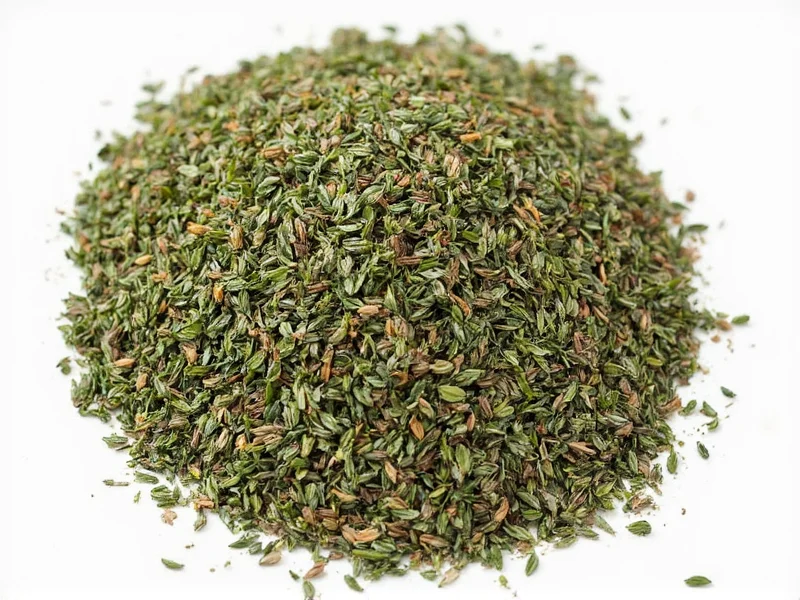Understanding herb conversions is essential for consistent cooking results. When a recipe calls for thyme but you only have the opposite form available, knowing the precise fresh thyme to dried conversion prevents flavor imbalances in your dishes.
Why Fresh and Dried Thyme Aren't Interchangeable 1:1
Thyme undergoes significant chemical changes during the drying process. As moisture evaporates, the essential oils and flavor compounds become more concentrated. Fresh thyme contains approximately 85% water, while dried thyme has only about 10% moisture content. This fundamental difference explains why you can't substitute equal volumes.
The Science Behind the 3:1 Conversion Ratio
Food scientists and culinary experts have established the 3:1 ratio through extensive testing. When thyme dries, it loses water but retains most of its flavor compounds. The concentration effect means dried thyme delivers approximately three times the flavor intensity of fresh thyme by volume.
Consider this practical example: If a recipe requires 3 sprigs of fresh thyme (about 1 tablespoon leaves), you would use just 1 teaspoon of dried thyme. Using equal amounts would result in an overpowering, potentially bitter dish.
Practical Fresh Thyme to Dried Conversion Chart
| Fresh Thyme | Dried Thyme Equivalent | Common Recipe Application |
|---|---|---|
| 1 teaspoon fresh leaves | ⅓ teaspoon dried | Salad dressings, delicate sauces |
| 1 tablespoon fresh leaves | 1 teaspoon dried | Standard recipe substitution |
| 3 sprigs fresh thyme | 1 teaspoon dried | Stews, braises, roasts |
| ¼ cup fresh leaves | 1¼ tablespoons dried | Large batch cooking |
Flavor Profile Differences Between Fresh and Dried Thyme
Fresh thyme offers bright, grassy notes with subtle floral undertones and a delicate aroma. Dried thyme develops deeper, more earthy characteristics with intensified pine-like notes. The drying process creates new flavor compounds through oxidation, resulting in a more robust but less nuanced profile.
Professional chefs note that dried thyme works better in long-cooking dishes like stews and braises, where its concentrated flavor can properly infuse the dish. Fresh thyme shines in quick-cooking applications, finishing dishes, or raw preparations where its delicate aroma remains prominent.
When to Use Fresh Versus Dried Thyme
Certain cooking scenarios favor one form over the other:
- Choose fresh thyme when: Making salad dressings, finishing sauces, preparing seafood dishes, or creating garnishes where visual appeal matters
- Choose dried thyme when: Cooking hearty stews, making spice blends, preparing dishes that cook for over 30 minutes, or when fresh herbs aren't available
For the best results with dried thyme, add it early in the cooking process to allow time for rehydration and flavor release. Fresh thyme works best when added toward the end of cooking to preserve its delicate aroma.
Proper Storage Techniques for Maximum Freshness
Maximize shelf life and flavor retention with these storage methods:
Fresh thyme: Trim stems and place in a glass with 1 inch of water, loosely cover with a plastic bag, and refrigerate. Change water every 2-3 days. Properly stored, fresh thyme lasts 10-14 days.
Dried thyme: Store in an airtight container away from light, heat, and moisture. Properly stored dried thyme maintains peak flavor for 6-12 months. After this period, it won't spoil but will gradually lose potency.
Testing Herb Potency Before Use
Before using dried thyme in critical recipes, test its potency. Rub a small amount between your palms and smell it. If the aroma is faint, you may need to increase the amount slightly beyond the standard conversion ratio. Fresh thyme should have a pronounced fragrance when leaves are rubbed.
Special Considerations for Different Thyme Varieties
While common garden thyme (Thymus vulgaris) follows the standard 3:1 conversion, some specialty varieties may differ slightly:
- Lemon thyme: Use a 2.5:1 ratio (slightly less dried due to more volatile citrus oils)
- French thyme: Follow standard 3:1 conversion
- Winter thyme: May require 3.5:1 ratio (more robust flavor when dried)
When working with less common varieties, start with the standard conversion and adjust to taste.
Professional Chef Tips for Perfect Thyme Substitution
Top culinary professionals recommend these techniques for flawless herb substitution:
- When substituting dried for fresh in uncooked applications (like salad dressings), steep the dried thyme in warm oil or vinegar for 10 minutes before use
- For baked goods requiring thyme, use 25% less dried thyme than the conversion suggests to prevent bitterness
- When making herb butter, always use fresh thyme as dried won't distribute evenly
- For marinades, dried thyme works better as it releases flavor more readily in acidic environments











 浙公网安备
33010002000092号
浙公网安备
33010002000092号 浙B2-20120091-4
浙B2-20120091-4